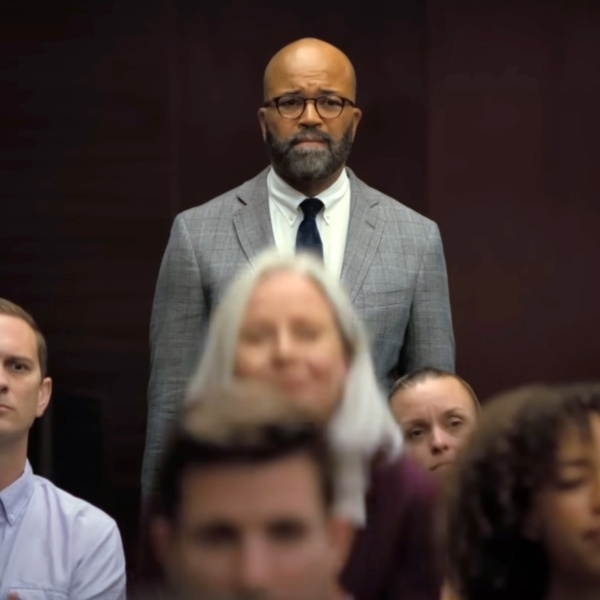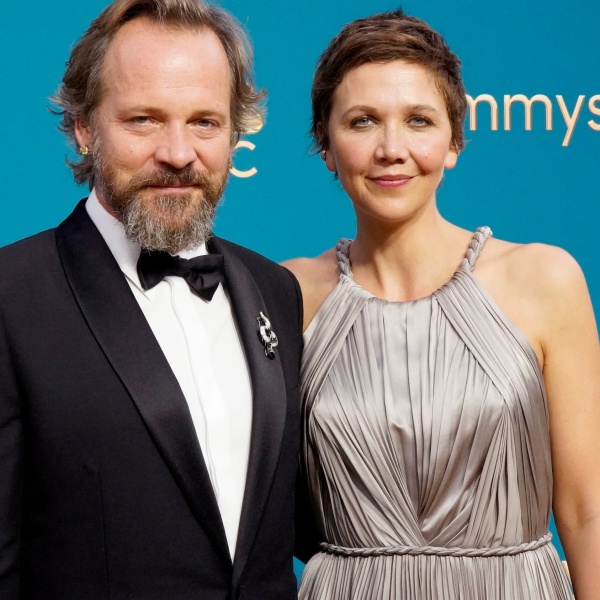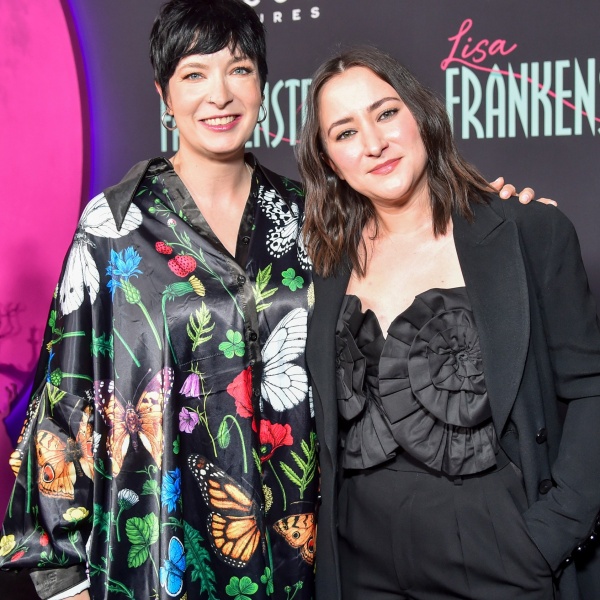It would seem that Todd Phillips has not taken kindly to the notion that his mega-grossing, Oscar-winning, career-defining “Joker” was some kind of incel rallying cry. (Remember when SWAT teams were on standby for the film’s New York premiere, just in case anyone in the audience felt a bit too empowered by the movie’s themes?) To Phillips’ mind, his comic book-fueled Scorsese homage was a sad clown story about the cruelty of our unempathetic world, told through the eyes of a man who’d been violently denied the love we all need to suffer through it.
Yes, “Joker” ended with Joaquin Phoenix’s Arthur Fleck shooting his favorite talk show host on live TV, the murder sparking a copycat riot that saw a mob of angry Gothamites set fire to the city in Arthur’s image, but the director would argue that rage fantasies aren’t endorsements, even in a semi-triumphant blockbuster that seduced multiplex audiences to share in their catharsis. It’s just entertainment, after all, and Phillips doesn’t feel he should be held responsible for a world too sick to separate fiction from reality.
As someone who believes that “The Hangover” sequels are the only truly evil things Phillips has ever made, and maintains that “Joker” was less dangerous for the ambivalence of its morals than it was for the obviousness of its success (my 2019 review was preoccupied with the semi-genuine fear that Hollywood would be inspired to costume the rest of its output in comic book lore), I was mostly annoyed that Phillips wanted to have his cake and eat it too. In that light, I suppose I should be delighted that his inevitable follow-up is so eager to vomit that same cake back up all over the screen — all over his fans and his critics alike. It must have been making Phillips sick to his stomach, because “Joker: Folie à Deux” is nothing if not a full-throated repudiation of the idea that its “hero” should be embraced as a symbol instead of pitied (or hugged) as a man.
So how does Phillips reconcile Joker with Arthur Fleck? How does he wrestle his misunderstood character study away from the idea that it wasn’t first and foremost a work of mass entertainment? With an excruciatingly — perhaps even deliberately — boring sequel that does everything in its power not to amuse you.
At a time when everything is consumed as entertainment, no matter how tragic, Phillips has created a corporate pop spectacle that all but demands to be seen as something else. Here is a movie that perversely denies audiences everything they’ve been conditioned to want from it; gently at first, and then later with the unmistakable hostility of a knife to the gut. And that, more than anything else, is why “Folie à Deux” adopts the form of a classic musical: Because no other genre makes it so easy to appreciate all the fun you’re not having. This is blockbuster filmmaking as a form of collective punishment, but unlike “Borderlands,” “Deadpool,” and so much else of what Hollywood has pumped into theaters this year, “Folie à Deux” doesn’t feel like it ever intended to be anything else.
It’s an admittedly unexpected gambit, and I’d be lying if I said that I didn’t admire the audacity Phillips displays by following all the way through with it (or accidentally backing into it, as the case might have been). Once again, Phillips has made a movie that Joker himself would probably approve of. This time, however, I’m much less convinced that other people will share the same enthusiasm for it. At no point does Phillips’ pleasure-denying concept become sophisticated or rewarding enough to justify the agony of sitting through it.
One major example among many: In theory, it might sound like a delightfully chaotic idea to troll audiences by introducing Lady Gaga as Joker’s partner in madness, only to then relegate her to the sidelines for most of the story in favor of endless trial scenes that literally relitigate the events of the previous film. In practice, Phillips’ decision to cast a generational superstar in a role that seems designed to maximize both her supreme talents as a singer and her all-consuming screen presence as an actress just so he can sit her in the background of a courtroom whenever he’s not cutting her musical numbers off at the knees… well, it’s a lot more criminal than anything Arthur Fleck ever does in this movie.
Which brings us to the other material benefit of having Arthur burst into song even more than he did in the previous film: it allows for — if not requires — a certain degree of romance. People failed to recognize that “Joker” was a story about an invisible guy who needed love, so Phillips made a love story about a guy who needs to be seen.

Five years have passed since Arthur was locked up for all of those pesky murders he committed, and his time in Arkham Asylum seems to be getting worse by the day. At the start of his stint Arthur would tell jokes to the guards every morning, but his mood has soured as “the trial of the century” draws near, and he’s been so eaten alive by how his life turned out that not even his Pseudobulbar affectcan get him to laugh (Phoenix looks even skinnier here than he did in “Joker,” his shoulder blades threatening to cut two holes straight through his back).
Things only begin to turn around for Arthur when the brutish guard assigned to him (“Paddington 2” star Brendan Gleeson, always good for a prison role of some kind) volunteers the inmate for a musical therapy class. That’s where he locks eyes with Gaga’s Harleen “Lee” Quinzel, a Joker superfan who swears that she’s seen the made-for-TV movie they made about him like 100 times. We sense that she may have “misunderstood” it, at least in the way some critics feared an imagined army of incels would misunderstand Phillips’ film.
Lee’s sympathy is all it takes to snap Arthur out of his stupor. His crime spree made her feel less alone, and now she’s all too happy to return the favor (“sing hallelujah come on get happy, get ready for the judgment day”). Love is the only thing Arthur has ever wanted, and — in the first and most inviting of the film’s largely forgettable musical numbers — Phoenix leads a roving long-take around the asylum’s TV room while belting out a gravel-voiced cover of Stevie Wonder’s “For Once in My Life.” It’s all in Arthur’s head, of course, as Phillips continues to draw a sharp line between fantasy and reality, but for a minute there I wondered if “Folie à Deux” might turn into a mega-budget riff on “Dancer in the Dark.”
No such luck. For one thing, Phillips and Scott Silver’s script relies on the musical numbers as a way for Arthur to express himself as Joker, rather than to escape from the misery of his existence (Joker is a musical, Arthur is a miserablist drama). Case in point: when he feels like someone doesn’t know what it’s like for him to love somebody, he and Lee sing a duet of the Bee Gee’s (you don’t know what it’s like) “To Love Somebody.” For another thing, aside from that Stevie Wonder song, Phillips seems physically incapable of — or actively uninterested in — shooting a musical setpiece with any visual panache to it whatsoever.
It’s interesting to note that Arthur prefers to sing romantic ballads while Lee tends to lead with songs about strength and power, but it certainly isn’t interesting to watch, as most of the tunes are pared down into dull cabaret arrangements and shot against the black void of the characters’ shared imagination. For two supposedly unhinged psychopaths who are meant to be enabling each other’s madness, Arthur and Lee don’t have a scintilla of creativity between them. Phoenix and Gaga’s mutual commitment is enough to generate some volatile tension during their dialogue scenes, but the only duet that captures any of the same excitement is the one staged as a “Sonny & Cher”-like TV show, and even that is a one-note bit. (The Sylvain Chomet cartoon that opens the film gets more out of its faux-innocent schtick, mostly because its cool-looking tedium sets an ominous precedent for the rest of a movie that will only live up to half of that equation.)

Perhaps there wouldn’t be so much pressure on the musical numbers if Joker were more present throughout the course of the film, but “Folie à Deux” has to keep Arthur separated from his alter ego for as long as possible. Arthur’s love affair with Lee inspires him to blur the line where he ends and Joker begins, but his lawyer — a weary Catherine Keener — is concerned that a sudden outburst might play into the prosecution’s argument that Joker is just a performance. (The talents of “Industry” star Harry Lawley are wasted on his non-character of a Harvey Dent, but it’s nice that casting directors are paying attention to HBO’s best show beyond the always electric Ken Leung, who also pops up for a few minutes here.)
Of course, the possibility remains that Arthur is the performance, but not even he seems to know for sure; the enduring magic of Phoenix’s performance is how it warbles between scary and pitiable with a will of its own, the dynamic Arthur shares with Joker as elusive and alive as anyone’s relationship to their own trauma. To quote the scene from “The Band Wagon” that Arthur and Lee watch during movie night at Arkham: “I’m sick of these artificial barriers between the musical and the drama.”
“Folie à Deux” shares that frustration so deeply that it comes to embody it, as Phillips stubbornly refuses to let the film’s songs have any material effect on the real world or vice-versa. It’s a notable choice in a film that’s at its best when wrestling with the fact that Arthur is ultimately inextricable from the icon he’s created, who’s stanned and feared in equal measure. So much as “Folie à Deux” has a central dramatic question, it’s this: Will Arthur surrender to his need to be loved, or will the trial — which forces him to confront how Joker has furthered his own cycle of abuse — lead him to feel lonelier than ever?
The answer is that no one really cares what the answer is. Especially not Joker’s cultists — Lee chief among them. Joker is a public figure, and so his fans assume that Arthur belongs to them too. Fame is about acting out other people’s fantasies, and the clown prince of crime’s only value to his supporters is as a symbol of their own desire to burn the world down. (Did I mention that Lee is a pyromaniac? Can you tell that this is a Batman spinoff?). But serving that function doesn’t heal Arthur of the pain that caused his psyche to fracture in the first place, or satisfy the loneliness that he’s been haunted by since childhood. “Let’s give the people what they want,” Lee whispers into Arthur’s ear, but what she’s really telling him is to deny himself what he needs.
Needless to say, “Folie à Deux” does not give the people what they want. On the contrary, it actively courts the disappointment of its own fandom in order to articulate how cruelly Arthur is co-opted by the fantasies of the collective unconscious — lost in a dream that his followers want to have for themselves. That’s all well and good for a meta-sequel that isn’t afraid to alienate its target audience, the problem is that Phillips doesn’t give the people anything else instead. His film is bold enough to deny expectations (and smug enough to savor the growing dissatisfaction that it creates in return), but not remotely thoughtful enough to offer something more interesting in their place.
“Folie à Deux” simply tap dances in place for the majority of its listless runtime, stringing together a series of underwhelming musical numbers that are either too on the nose to communicate anything that Arthur couldn’t express without them — Shirley Bassey’s “The Joker” is a major “are we really doing this?” moment — or too vaguely related to its characters to express anything at all (the note-perfect Billy Joel song cued during the movie’s climax is the exception that proves the rule). In between, Phillips struggles to find a shape for his story without having a Scorsese classic to use as a template, and while a certain degree of narrative torpor might serve “Folie à Deux” on a conceptual level, its turgid symphony of unexpected cameos, mournful cello solos, and implied sexual violence is too dissonant to appreciate even on its own terms.
By the time “Folie à Deux” arrives at its well-telegraphed coup de grâce, the perfect finale to a sequel whose smirking ghoulishness is its only source of pleasure, the brief clip we see from “The Band Wagon” has cast a far longer shadow than any of the musical numbers staged in the film itself. “That’s entertainment!,” Jack Buchanan sings. This feels like it wants to be something else. Mission accomplished, I guess.
Grade: C-
“Joker: Folie à Deux premiered at the 2024 Venice Film Festival. Warner Bros. will release it in theaters on Friday, October 4.



